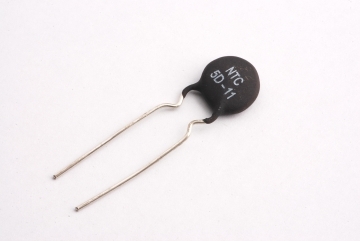News
- 2010-09-08 17:22:35
-

How does an NTC Thermistor Work?
NTC negative temperature coefficient thermistor works
NTC is Negative Temperature Coefficient of abbreviations, the meaning of a negative temperature coefficient, refers to the negative temperature coefficient of semiconductor materials or components, the so-called NTC thermistor is a negative temperature coefficient thermistor device. It is based on metal oxides, such as manganese, cobalt, nickel and copper as a main material, and the ceramic manufacturing process made. These metal oxide materials have semiconductor properties, because the conductive way completely similar germanium, silicon and other semiconductor materials. The temperature is low, the number of these oxide material carriers (electron and hole) less, so its resistance value is high; as the temperature increases, the number of carriers increases, so the resistance value is lowered. The range of variation of the NTC thermistor at room temperature 10O ~ 1000000 ohms, the temperature coefficient of -2% to -6.5%. NTC thermistor NTC thermistors are widely used for temperature measurement, temperature control, temperature compensation.
NTC negative temperature coefficient thermistor
NTC (Negative Temperature Coefficient) refers to the reduced resistivity exponential relationship, with a temperature rise phenomenon and material having a negative temperature coefficient thermistor. The material is sufficiently mixed with manganese, copper, silicon, cobalt, iron, nickel, zinc, and the like of two or more metal oxides, molding and sintering process is made of a semiconductor ceramic having a negative temperature coefficient, can be made (NTC) thermistor. Ratio, sintering atmosphere, sintering temperature, and the structural state of the resistivity and material constants with the material composition varies. Now also appears to the silicon carbide, selenium, tin, tantalum nitride, etc. as the representative of the non-oxide-based NTC thermistor material.
Most NTC thermistor semiconductive porcelain spinel structure or other structure of oxide ceramics, having a negative temperature coefficient, the resistance value can be approximately expressed as: where RT, RT0 is the temperature T, T0 when the resistance value, Bn The material constants. Ceramic grain changes due to temperature changes in the resistivity, which is determined by the semiconductor properties.
NTC negative temperature coefficient thermistor History
The NTC thermistor experienced long stage. 1834, the first time scientists have found that the characteristics of the negative temperature coefficient of silver sulfide. In 1930, scientists found that the cuprous oxide - copper oxide has a negative temperature coefficient of performance and the success of the use of in aviation instrument temperature compensation circuit. Subsequently, due to the continuous development of transistor technology, thermistor made significant progress. NTC thermistor developed in 1960.
NTC negative temperature coefficient thermistor temperature range
Its measurement range is generally -10 ~ +300 ℃, can also be done from -200 to +10 ° C and can even be used for temperature measurement with +300 ~ +1200 ℃ environment.
The negative temperature coefficient thermistor thermometer accuracy can reach 0.1 ° C temperature sensing less time to 10s. It is not only applicable to the granary thermometer, also can be used in food storage, medicine and health, scientific farming, marine, deep wells, high-altitude, glacier temperature measurement.
- Previous [Return Home] [Print] [Go Back] Next
Contact Us
Contact Person:
Miss Li MeizhenTel:
86-769-82825339- 82825369
- 18929453899
Fax:
86-769-82829959Email:
nanalee.mc@163.com


